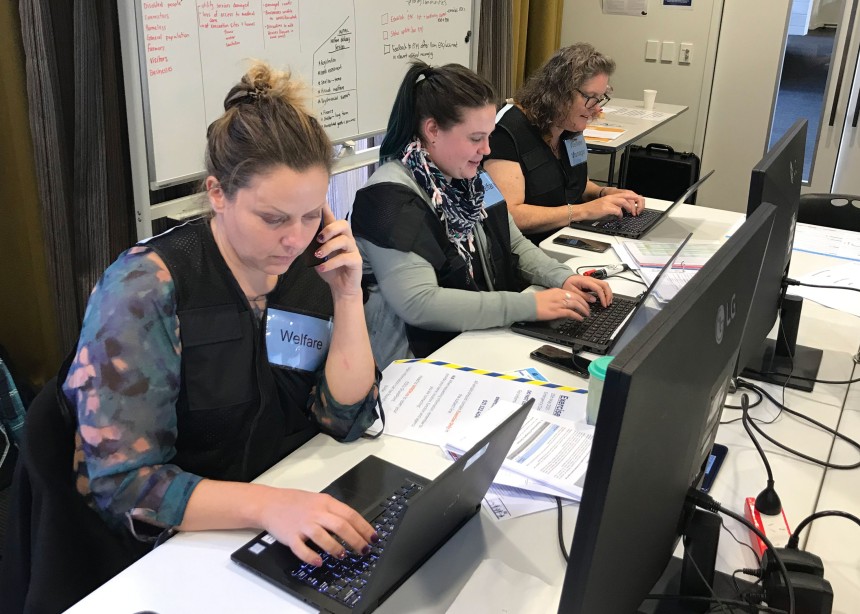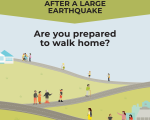Council staff and agency representatives from across the Wellington region donned their emergency management vests this week and delved into Exercise Parawhenua – a scenario which focused on a tsunami that would affect the whole of New Zealand’s Coastline.
The exercise scenario focussed on a 9.1 Magnitude earthquake off the coast of Chile which would generate a tsunami that would take 12-14 hours to reach the Wellington region’s east coast, and would affect the whole region’s Red and Orange Tsunami Zones.
Wellington Civil Defence and Emergency Management Group Controller Mark Duncan says these exercises provide an opportunity for Civil Defence to improve the way they respond to major emergencies.
“We run regular exercises to strengthen relationships with partner agencies and organisations and to test our emergency response plans, process and procedures.
“Our ultimate goal is to minimise the negative impacts that major disasters can have on our communities,” Mark says.
To coordinate the response, the region practised the activation of each council’s Emergency Operations Centre and the regional Emergency Coordination Centre, which involved over 180 council staff and more than 30 partner agency personnel.
A range of partner agencies support coordination centres, including Police, Fire and Emergency NZ, Wellington Free Ambulance, NZ Defence Force, Ministry of Social Development, Ministry of Education, Ministry of Business Innovation & Employment, Waka Kotahi, District Health Boards and Regional Public Health.
“The focus of the exercise was to provide timely and accurate information to the public to keep people informed of the risks of tsunami and actions they can take to look after themselves and others, to coordinate the evacuation of the region’s Red and Orange Zones and to look after people impacted or displaced by tsunami waves.
“Each exercise is evaluated, and while there are a number of areas to improve on going forward, our dedicated teams did a great job of carrying out this scenario under realistic time pressures and I’m confident our communities across the region will be in safe hands during a real emergency,” Mark says.
A key finding from these exercises, as well as the earthquake and tsunami events on March 5, is the importance of people knowing their tsunami zones, and where to go for safety, Mark explains.
“To find out whether you live or play in a tsunami zone go to www.wremo.nz/hazards/tsunami-zones/ or your local council website. It’s also a good idea to follow our WREMOnz facebook page for up to date information and advice during an emergency.”
These exercises took place in:
· Wellington Emergency Coordination Centre in Thorndon
· Porirua Emergency Operations Centre
· Kāpiti Emergency Operations Centre
· Wairarapa Emergency Operations Centre
· Lower Hutt Emergency Operations Centre
· Upper Hutt Emergency Operations Centre
· Wellington City Emergency Operations Centre (took part in a different scenario involving a landslide).

